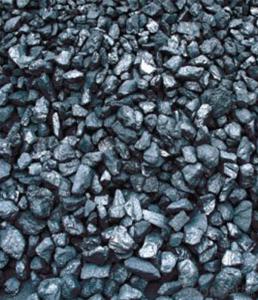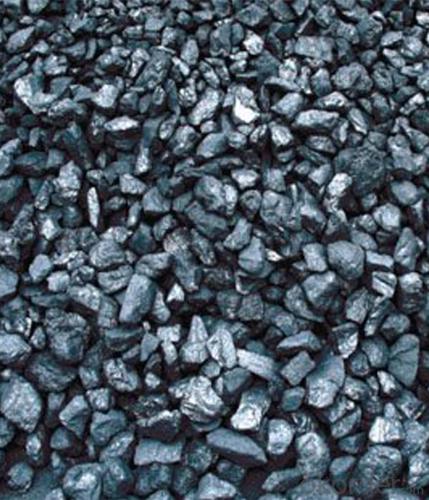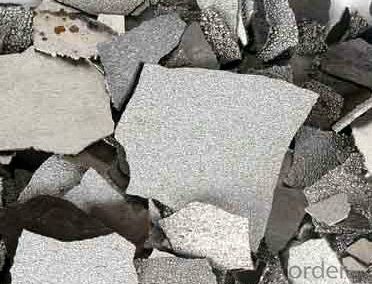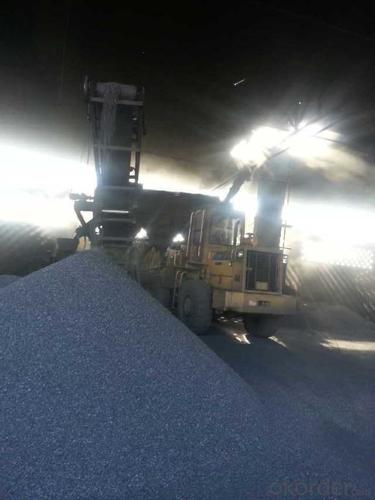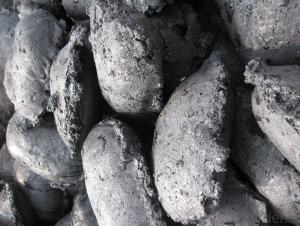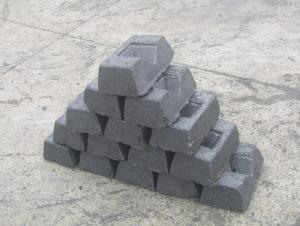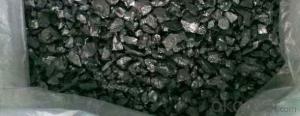FC Content 90%-95% Calcined Anthracite
- Loading Port:
- China Main Port
- Payment Terms:
- TT or LC
- Min Order Qty:
- -
- Supply Capability:
- -
OKorder Service Pledge
OKorder Financial Service
You Might Also Like
FC Content 90%-95% Calcined Anthracite
Product Description:
After many years' research and according to customers' use experience, FSK Carbon additive has gained the features of high carbon, low sulfur, low nitrogen and less impurities. FSK carbon additive can be used in the steel casting to promote the steel quality in steel-melting, now this product is widely used in foundry plants, brake pads and rub material produce scopes .
Specification as follows:

Above grain size is our standard recommendation, if you have any special requirement, pls contact with duratight freely.
1/for normal steel,we recommend DT-CA-10 for you, Fixed carbon(max):95%,sulfur(max):0.3%
2/ for low Nitrogen steel, Steel cord ,high strength wire-steel,we recommend DT-CA-06, DT-CA-07,DT-CA-08,DT-CA-09.
Packing and delivery details:
1.Waterproof ton bags(without small bags inside )
2.20kgs/25kgs paper bags, 40 bags on one pallet or in one MT-bag
3.20kgs/25kgs/30kgs waterproof PP Woven bags ,990kgs on one pallet or in one MT-bag
Above packing is our standard packing, if you have special requirement about the packing, pls contact with us freely.
Pictures:

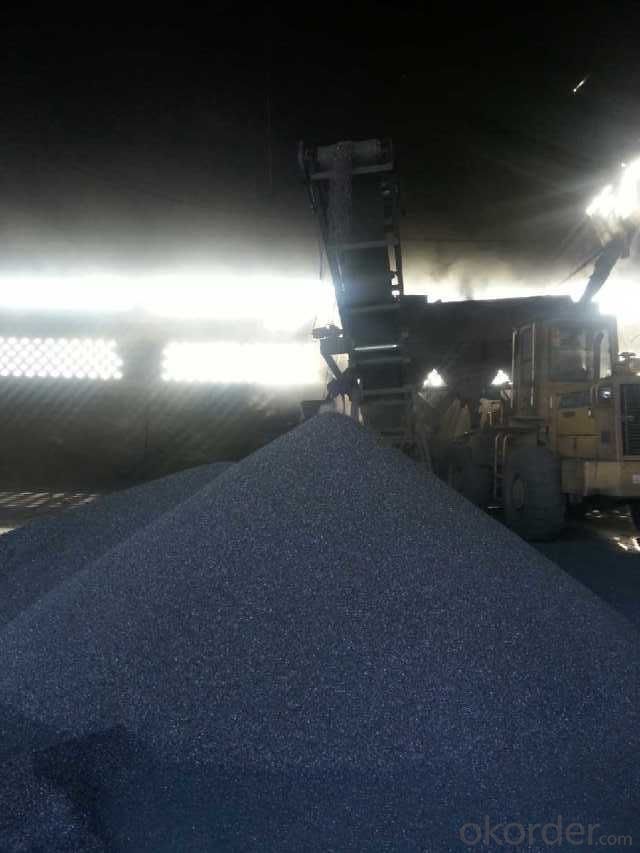
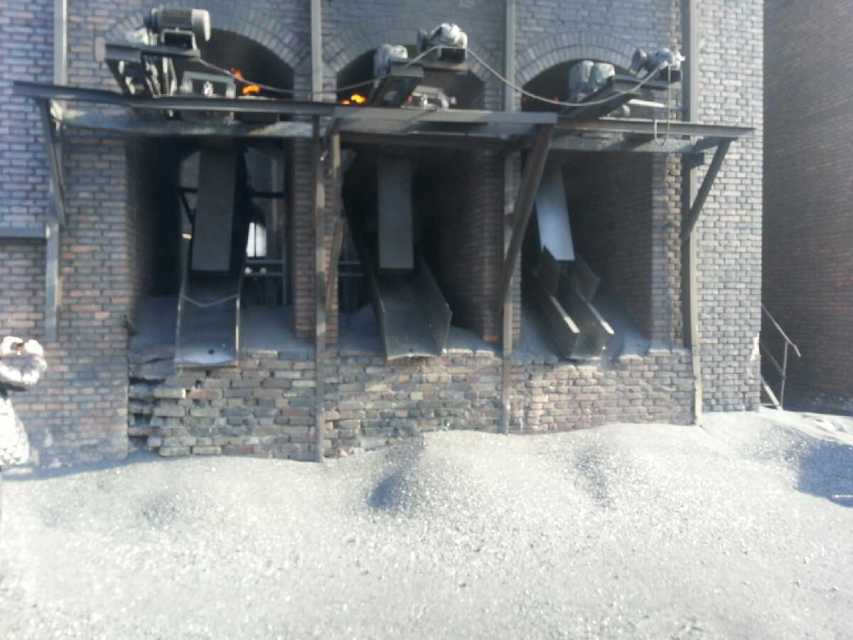

- Q: What are the advantages and disadvantages of carbon monoxide and carbon dioxide?
- Carbon monoxide is a common poison, but trace use is good for organ transplants. British researchers have recently developed a new method that can effectively use carbon monoxide to help transplant organs survive, while avoiding the risk of carbon monoxide poisoning. Excessive inhalation of carbon monoxide poisoning will lead to death, carbon monoxide into the human body, and soon the hemoglobin in blood combined with the formation of carboxyhemoglobin, causes red blood cells to reduce the oxygen carrying, the tissue hypoxia in vivo. The cardiac and central biblical system is the most sensitive to hypoxia and the earliest affected. In the air of carbon monoxide concentration reached 117 mg / M 3, people can feel headache, vertigo: up to 292.5 mg / M 3 symptoms; up to 582.5 mg / M 3 will be nausea and vomiting, exhaustion, if not timely rescue can have life risk. When the concentration of carbon monoxide in the air reaches 11700 mg / M 3, a coma occurs; the concentration of carbon monoxide in the air reaches 1170 mg / m. The 3 spoons will soon die. This is bad. But in organ transplant operations, the use of trace amounts of carbon monoxide helps dilate blood vessels and reduce inflammation, thereby increasing the survival rate of transplanted organs.
- Q: Benefits of reducing carbon emissions
- 1, carbon dioxide in fresh air content of about 0.03%. People living in this space will not be harmed, if the indoor gathered a lot of people, and the air is not circulating. Or indoor gas, liquefied petroleum gas and coal combustion, the oxygen content in the air is relatively reduced, produce large amounts of carbon dioxide, the indoor personnel will appear different degrees of poisoning symptoms. As for the maximum allowable content of carbon dioxide in indoor air, there is no uniform regulation in different countries. Japan has a standard of ventilation when the content of carbon dioxide in the indoor air is 0.15%. The following table shows the effect of CO2 content in air on human body.
- Q: What are the consequences of increased carbon emissions on coral reefs?
- Coral reefs are severely impacted by the increased emission of carbon, resulting in numerous consequences. One major effect is the occurrence of ocean acidification, which happens when excess carbon dioxide is absorbed by seawater, causing a decrease in pH levels. This acidification hampers the ability of corals to construct their calcium carbonate skeletons, making them more susceptible to erosion and breakage. Moreover, elevated levels of carbon dioxide in the atmosphere contribute to global warming, leading to the rise of ocean temperatures. Consequently, coral bleaching occurs as corals expel the symbiotic algae responsible for their vibrant colors. Without these algae, corals become stressed, lose their color, and become more vulnerable to disease and death. Additionally, increased carbon emissions contribute to alterations in ocean currents and weather patterns, resulting in more frequent and intense storms. These storms physically damage coral reefs, causing further destruction to already fragile ecosystems. The consequences of increased carbon emissions on coral reefs are profound and devastating. The decline of coral reefs not only impacts the biodiversity of the oceans but also has significant implications for human populations that rely on reefs for sustenance, income, coastal protection, and tourism. It is imperative to reduce carbon emissions and take immediate action to safeguard and preserve these invaluable ecosystems.
- Q: How does carbon impact the ozone layer?
- Carbon does not directly impact the ozone layer. However, certain carbon compounds, such as chlorofluorocarbons (CFCs), can contribute to ozone depletion when released into the atmosphere.
- Q: How much is a ton of carbon fiber? How much difference is made between domestic and imported?
- To 12K carbon fiber, for example, domestic prices between 16~17 million, imports of Dongli carbon fiber prices between 27~29 million.
- Q: What are the effects of carbon emissions on the stability of coastal ecosystems?
- Carbon emissions have significant negative effects on the stability of coastal ecosystems. The increased concentration of carbon dioxide in the atmosphere leads to ocean acidification, which disrupts the delicate balance of marine ecosystems. This acidity affects the growth and development of various organisms such as corals, shellfish, and other calcifying organisms, jeopardizing the health of coral reefs and shellfish populations. Additionally, rising sea levels, a result of climate change caused by carbon emissions, threaten coastal habitats, including wetlands and mangroves, which serve as critical nurseries and protective buffers against storms. Overall, carbon emissions contribute to the degradation and vulnerability of coastal ecosystems, compromising their stability and the services they provide to both marine life and human communities.
- Q: What are carbapenem antibiotics?
- The home has been listed on the varieties of imipenem, meropenem, panipenem, faropenem, ertapenem, biapenem.Carbapenem antibiotics are the most widely antibacterial and atypical antibiotics with the strongest antibacterial activity.
- Q: What is the role of carbon in organic chemistry?
- Carbon is the backbone of organic chemistry as it has the unique ability to form covalent bonds with other carbon atoms and a wide variety of other elements, resulting in the vast diversity of organic compounds. It is the element that allows for the formation of complex molecules, such as carbohydrates, proteins, lipids, and nucleic acids, which are essential for life processes.
- Q: What is the carbon cycle?
- The carbon cycle refers to the process by which carbon is exchanged and recycled between the Earth's atmosphere, oceans, and land. It involves various natural processes such as photosynthesis, respiration, decomposition, and combustion, as well as human activities such as burning fossil fuels and deforestation. This cycle helps regulate the Earth's climate and is crucial for maintaining the balance of carbon dioxide in the atmosphere.
- Q: There are several allotropes of carbon
- Allotrope of carbon: diamond, graphite, carbon 60 (fullerene), amorphous carbon (charcoal, coke, activated carbon, etc.)
Send your message to us
FC Content 90%-95% Calcined Anthracite
- Loading Port:
- China Main Port
- Payment Terms:
- TT or LC
- Min Order Qty:
- -
- Supply Capability:
- -
OKorder Service Pledge
OKorder Financial Service
Similar products
Hot products
Hot Searches
